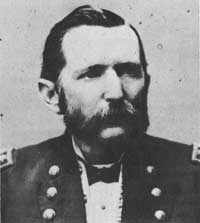





Survey of Historic Sites and Buildings
 |
COVE FORT Utah |
 |
| ||
Built in 1867 by order of Brigham Young with church funds, Cove Fort provided a refuge for settlers during the Ute Black Hawk War and was a way station for travelers between Salt Lake City and Mormon settlements in the Virgin River Valley and in southern Nevada and California. The site was a favorite camping place of Young, who made frequent trips to southwestern Utah. The builder of the fort, Ira N. Hinckley, maintained it as a residence until 1877. One of its 12 original rooms housed a telegraph station on the Mormon line. Fortunately Indians never attacked or besieged the fort, for its water supply was poor. An earlier fort, known as Willden's Fort, consisting of three rooms and a dugout, had been built on the site in 1861.
Although privately owned, Cove Fort is open to the public. Constructed of blocks of basalt laid with lime mortar, it consists of two one-story rows of six rooms each that face each other across a courtyard and form the north and south walls of a 100-foot square fortification. Each room has a door and window to the court and door connecting with adjacent rooms, but the exterior walls have no openings. The south range is original, and the north range was restored in 1917. The courtyard is walled at each end with the same type of masonry, and in each wall is a large gate of heavy planks. Just above the tops of the gates and running the full length of each end wall is a wooden catwalk to enable defenders to use the upper portion of the wall for protection while shooting through firing ports. The exterior walls of the rooms also served as parapets.
 |
| Cove Fort, Utah. (National Park Service) |
 |
FORT DESERET Utah |
 |
| ||
Fort Deseret was one of many built by the Mormons to protect settlers and serve as way stations for travelers. Although the Indians never attacked the post, local residents found it a welcome refuge when hostilities threatened. Constructed in 1866 of mud and straw, it had two corner bastions and was approximately 550 feet square. Most of the 10-foot walls have fallen down. The corners, two bastions, and most of the east wall still stand in an undeveloped State park.
 |
 |
http://www.cr.nps.gov/history/online_books/soldier-brave/sitec17.htm
Last Updated: 19-Aug-2005
